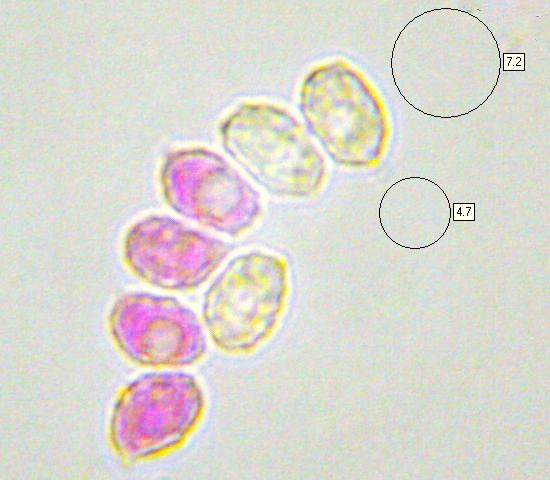Melanoleuca polioleuca (Fr.) Kühner & Maire - Common Cavalier
Phylum: Basidiomycota - Class: Agaricomycetes - Order: Agaricales - Family: Tricholomataceae
Distribution - Taxonomic History - Etymology - Identification - Culinary Notes - Reference Sources
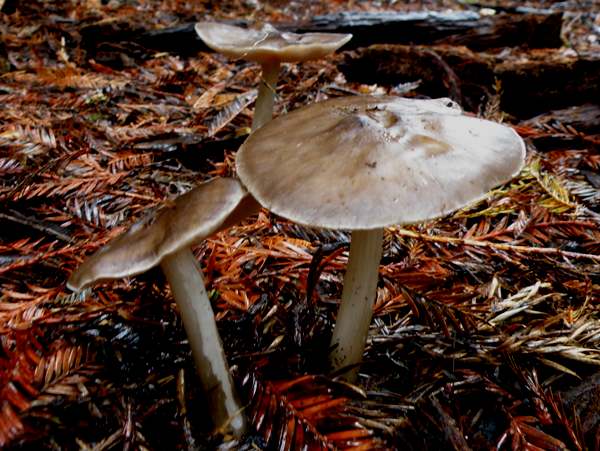
With a dark cap covering pallid gills, this is a tricky species to identify from macroscopic features alone; it occurs in deciduous broadleaf woodland and with conifers, notably pines, andit is a saprobic fungus (feeding on rotting wood and other organic vegetation).
It is very difficult to separate this species from some of the other brown-capped cavaliers such as Melanoleuca melaleuca, with more broadly ellipsoidal spores and no gill-edge cystidia.
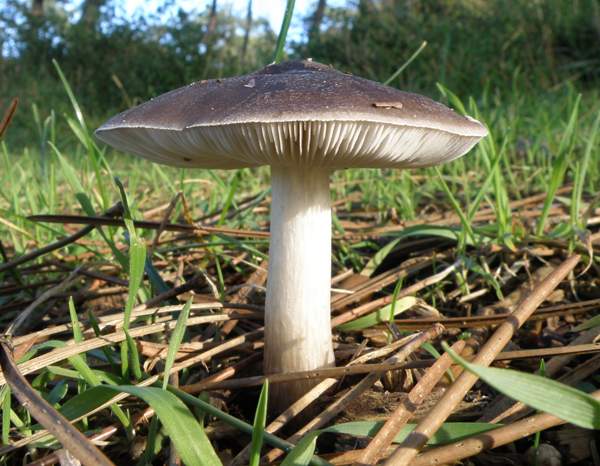
Distribution
Widespread and fairly common in Britain and Ireland, Melanoleuca polioleuca occurs throughout mainland Europe and is found also in North America.
Taxonomic history
This mushroom was described in 1821 by the great Sweddish mycologist Elias Magnus Fries, who gave it the name Agaricus polioleucus. (In the early days of fungal taxonomy, most of the gilled mushrooms were included initially in a huge genus Agaricus; later many new genera were erected into which the majority of species were transferred, so that nowadays the genus Agaricus is rather more manageable!) The Common Cavalier was transferred to the genus Melanoleuca in 1934 by German mycologist Robert Kühner (1903 - 1996) and French mycologist René Charles Joseph Ernest Maire (1878 - 1949).
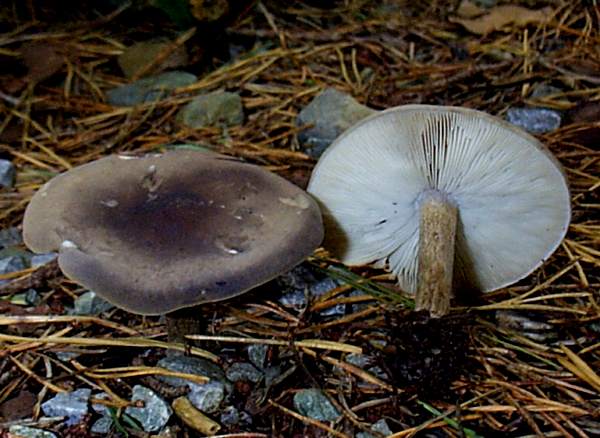
Synonyms of Melanoleuca polioleuca include Agaricus polioleucus Fr., Tricholoma melaleucum var. polioleucum (Fr.) Gillet, Melaleuca vulgaris Pat., Tricholoma polioleucum (Fr.) Sacc., Melanoleuca vulgaris (Pat.) Pat., and Melanoleuca polioleuca f. polioleuca (Fr.) Kühner & Maire.
Etymology
The genus name Melanoleuca comes from the Ancient Greek words melas meaning black, and leucos meaning white. No cavalier mushroom is truly black and white, but many have caps whose upper surfaces are various shades of brown, with whitish gills beneath.
The specific epithet come from poli- meaning grey or hoary, and leucos meaning black - so I suppose hoary greyish-black would be a literal translation and perhaps also a passable description.
Identification guide
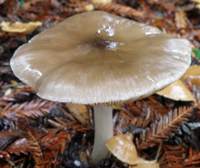 |
CapThe appearance of caps is very variable from specimen to specimen and varies even more through the development life of the fruitbody. The cap is initially convex with a downturned margin, eventually flatenning and sometimes developing a central depression, usually with a small umbo; smooth; slightly greasy; dark grey-brown when moist, turning paler in dry weather; 4 to 8cm across when fully expanded. |
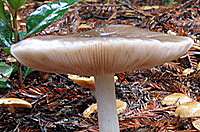 |
GillsSinuate; white, turning creamy-grey with age. StemThe stem is generally much longer than the cap diameter - often by as much as a factor of two. 4 to 10cm long and 0.5 to 1cm diameter; base slightly bulbous; white, covered in grey-brown fibrils that are densest towards base; no stem ring. |
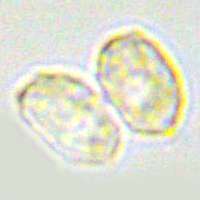 |
SporesEllipsoidal, densely warty, 6.5-9 x 4-5μm; amyloid. Spore printVery pale cream. |
Odour/taste |
Odour faintly mealy; taste mild but not distinctive. |
Habitat & Ecological role |
On soil among leaf litter in all kinds of woods and forests and near trees in lawns and parks.. |
Season |
July to November in Britain and Ireland. |
Similar species |
Melanoleuca melaleuca is macroscopically indistinguishable with certainty from the Common Cavalier, but it can be separated by microscopic examination of the spores, cystidia etc. Its spores are more broadly ellipsoidal (they have a lower ratio of major to minor diameter, which in mycologists refer to as having a lower Q factor) and it lacks gill-edge cystidia, which are present in Melanoleuca polioleuca. More than thirty species in the Melanoleuca genus are recorded from Britain and Ireland, and most have brownish caps and white gills; separating them is a task for specialists. Many of them are very rare finds, whereas the Common Cavalier is by far the most widespread and abundant member of the group. |
Culinary Notes
The Common Cavalier is reported as being edible but nothing special; however, as these kinds of mushrooms are notoriously difficult to identify and I recommend that they should be considered suspect and not collected for food..
Reference Sources
Fascinated by Fungi, 2nd Edition, Pat O'Reilly 2016, reprinted by Coch-y-bonddu Books in 2022.
Dictionary of the Fungi; Paul M. Kirk, Paul F. Cannon, David W. Minter and J. A. Stalpers; CABI, 2008
Taxonomic history and synonym information on these pages is drawn from many sources but in particular from the British Mycological Society's GB Checklist of Fungi.
Fascinated by Fungi. Back by popular demand, Pat O'Reilly's best-selling 450-page hardback book is available now. The latest second edition was republished with a sparkling new cover design in September 2022 by Coch-y-Bonddu Books. Full details and copies are available from the publisher's online bookshop...
